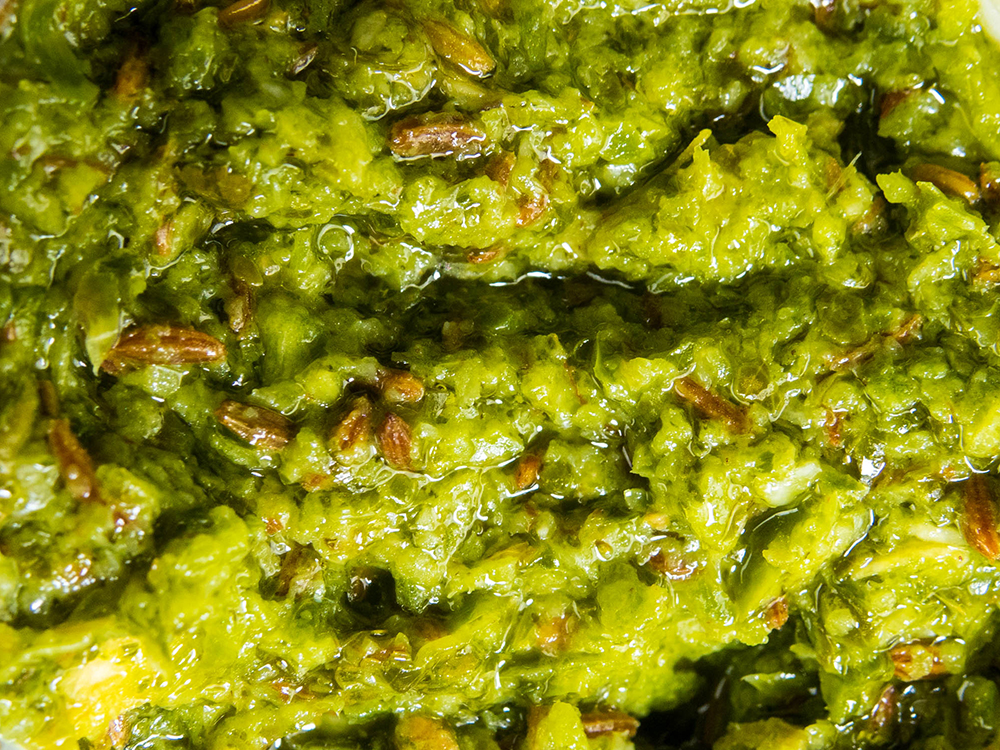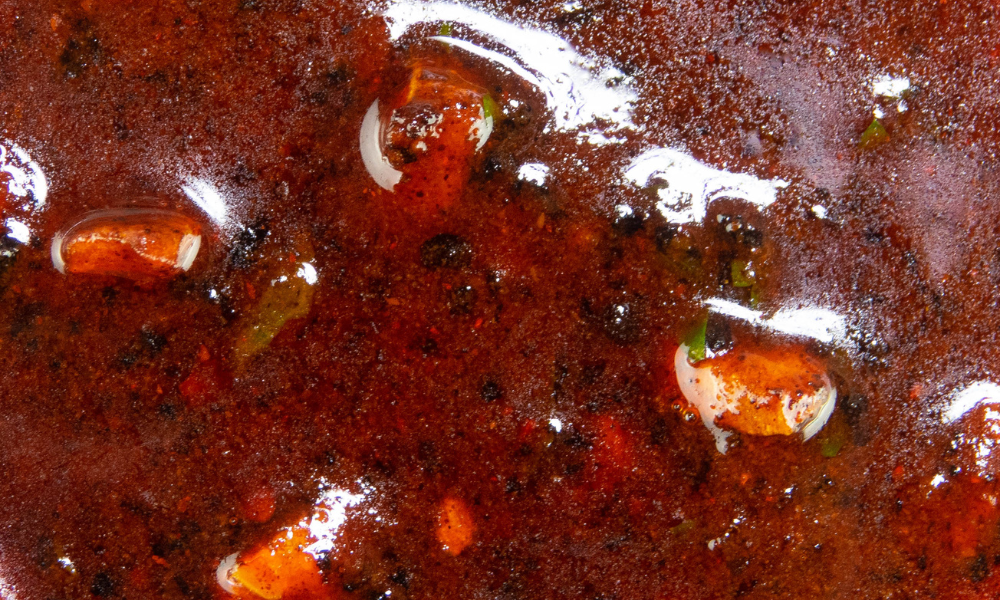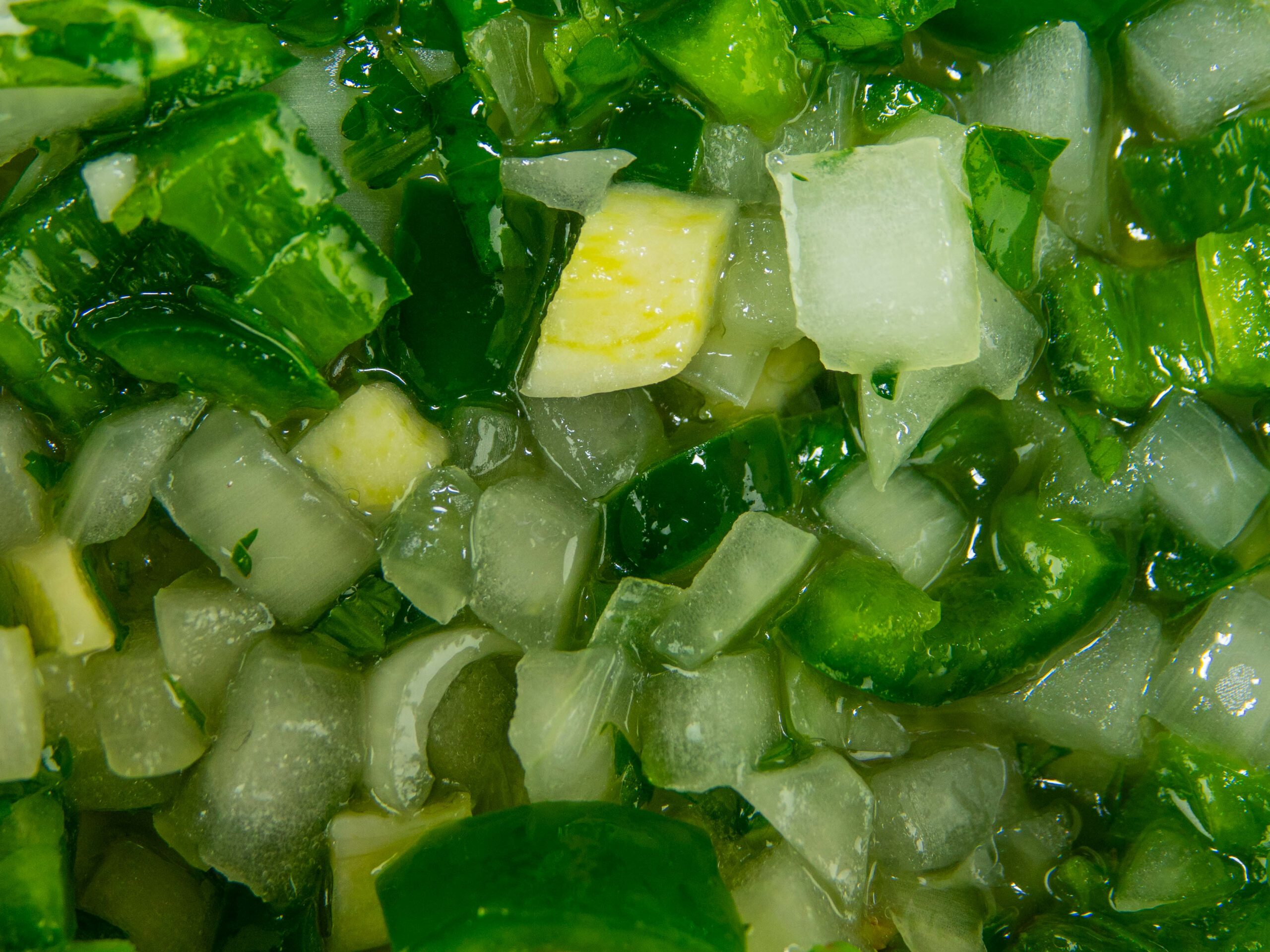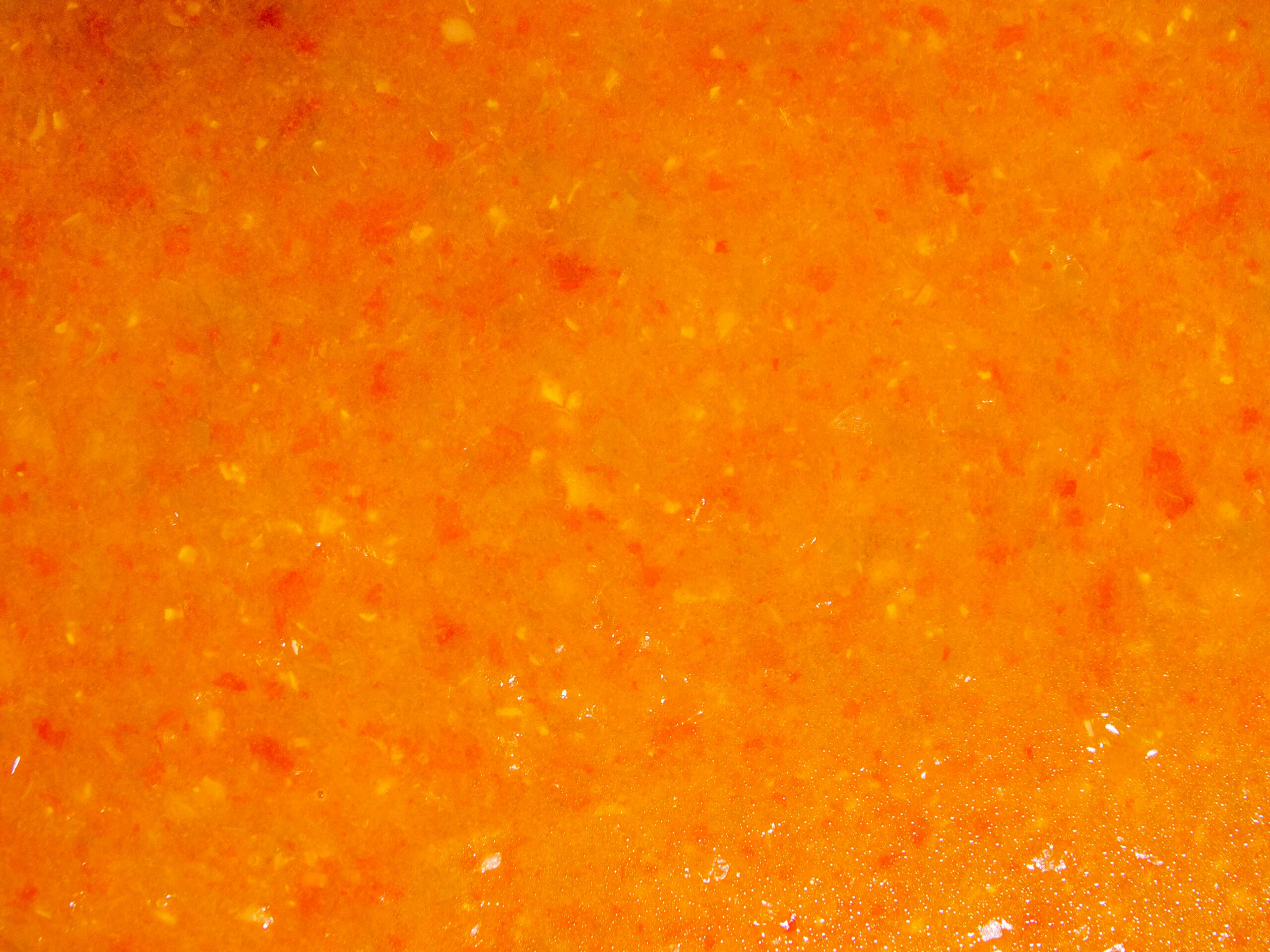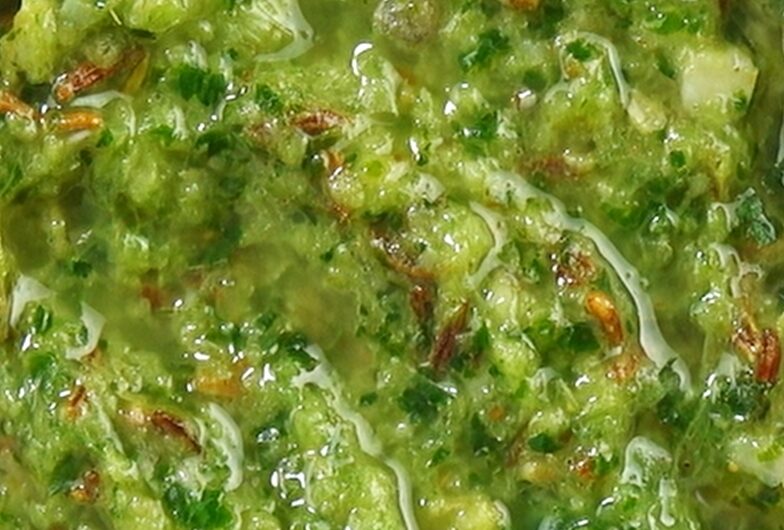Ingredients
- 2 green chillies stem removed
- 2 garlic cloves peeled
- Bunch of coriander
- 1 tsp ground cardamon or 4 whole pods
- 1 tsp whole cumin
- 1 tsp caraway seeds
- 80 ml olive oil
- Half a lemon juice only
- Salt
Method
Step 1: Toast Cumin
I prefer using whole spices as they pack far more of a punch than those that have been pre-ground and are left to sit in a jar for months and months. If you are using whole spices then give them a toast in a dry pan for a few minutes.
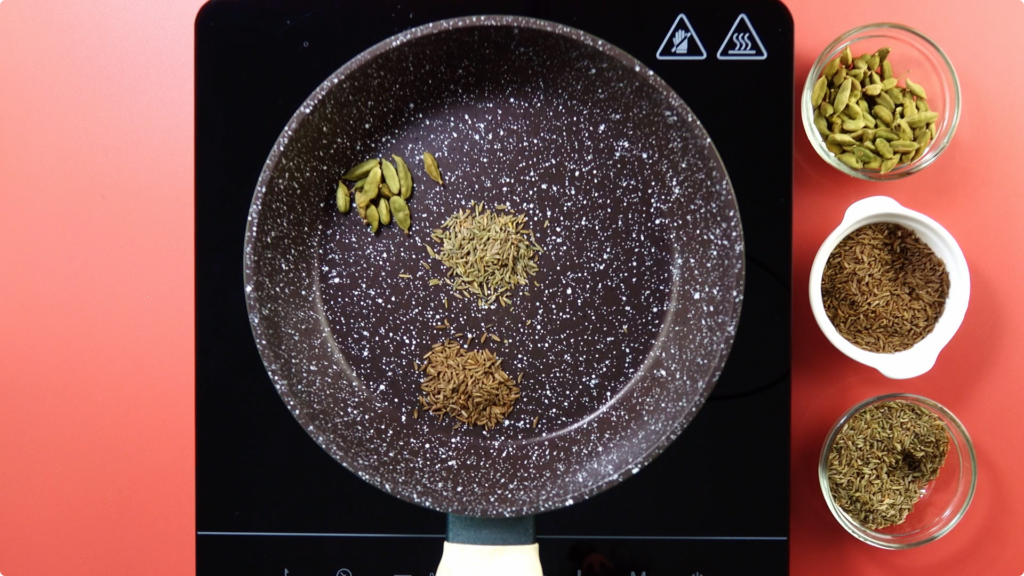
- You’ll find that the cumin seeds will jump around the pan as they toast, so be careful, but this is exactly what you’re after. They’ll begin to release a strong odour once toasted fully.
Step 2: Blend
You can then pop all the ingredients, excluding the oil, lemon and salt, into a food processor and give everything a blitz until things are roughly chopped. You are looking for a fairly chunky paste. If you don’t have a food processor, you could also use an immersion blender.
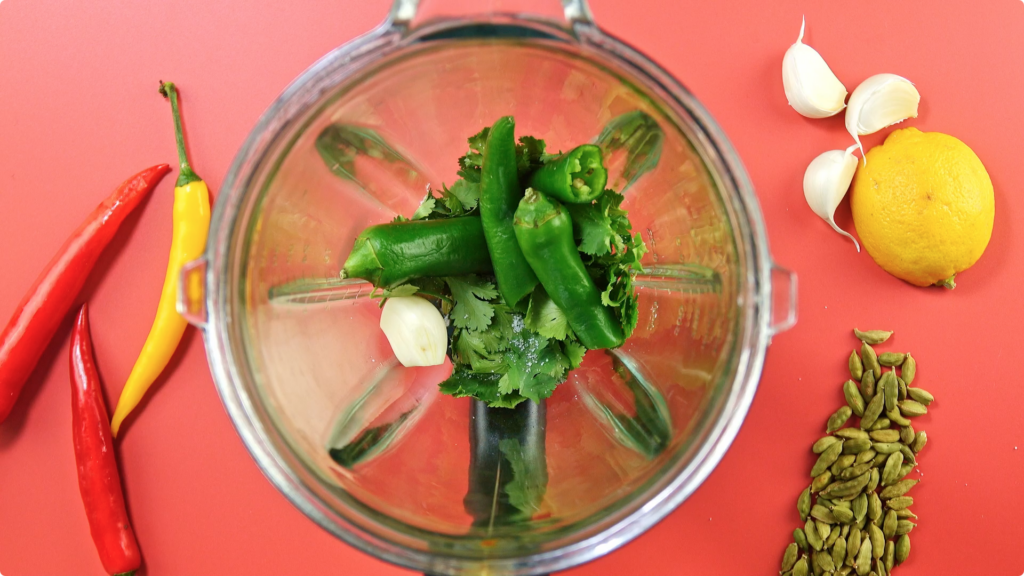
Step 3: Slowly Add Oil
Now, while drizzling in your olive oil, continue to process the ingredients. This will take your rough paste to a slightly smooth sauce. There’s nothing wrong with a bit of texture though.
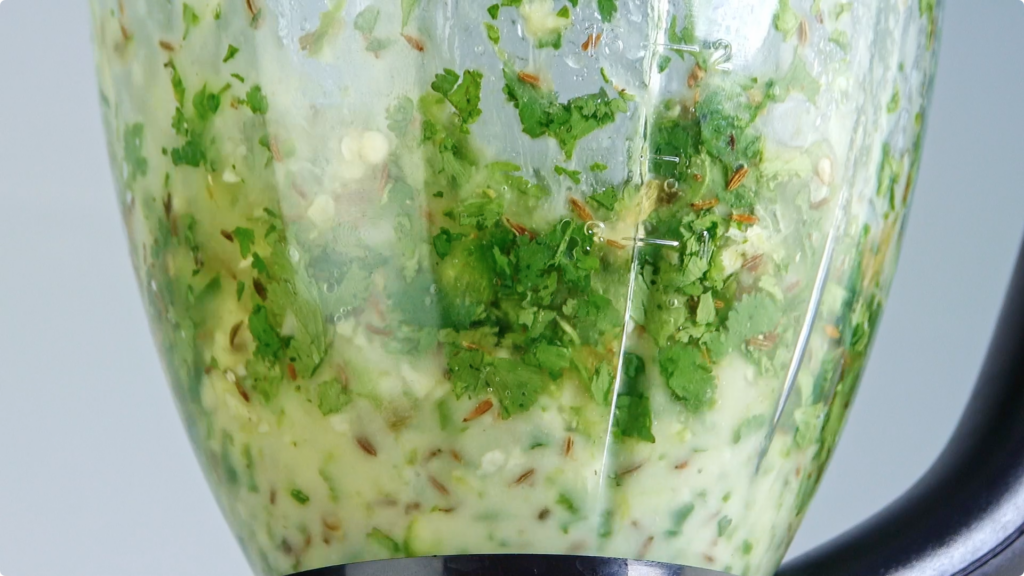
Step 4: Season
Add a pinch of salt and a squeeze of lemon juice, and then give it a quick taste. Adjust the seasoning accordingly. If it’s too spicy then add a little more lemon juice. If it’s a bit bland then a pinch of salt will help.
Tweaks
- Mix Up the Herbs Coriander is the go-to option for zhoug but you could try making it with parsley, basil, mint or a combination of any fresh herbs
- Thicken Use crushed nuts to both thicken the sauce a little and add a subtle nutty flavour. Ground almonds, pistachios or walnuts all work well
- Up the Acid Acid will always improve a sauce so try adding a splash of red wine vinegar to give this more of an acidic balance
Storage
- In the Fridge Place the zhoug in an airtight container or jar. Pour a thin layer of olive oil on top to preserve its freshness. Store in the refrigerator for up to 2 weeks.
- In the Freezer Transfer the zhoug to an airtight container, leaving some space for expansion. You could also use ice cube trays. Freeze for up to 6 months, thawing in the fridge before use.


